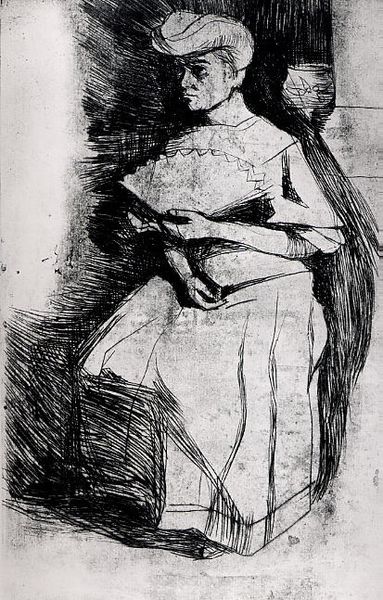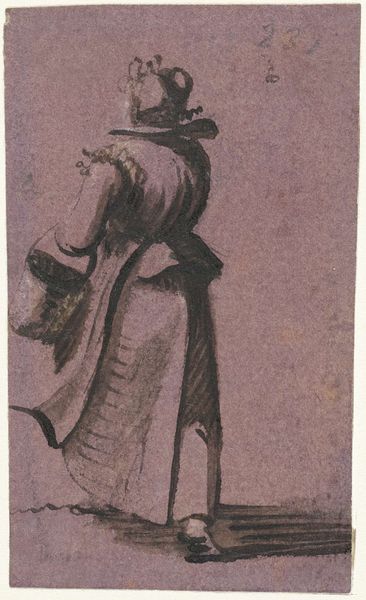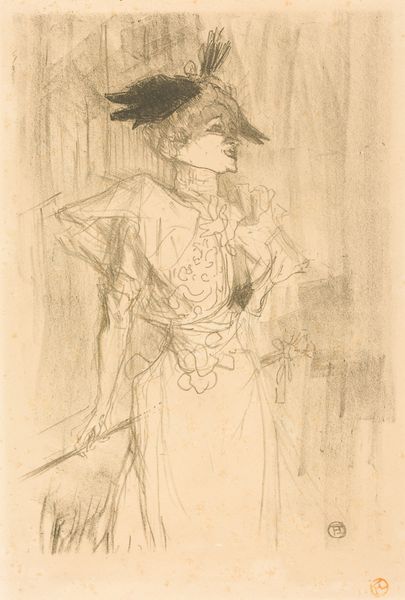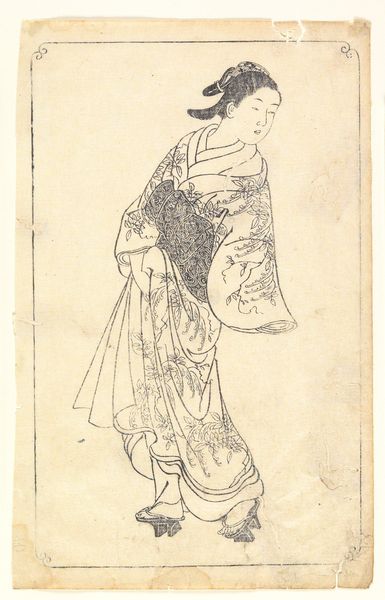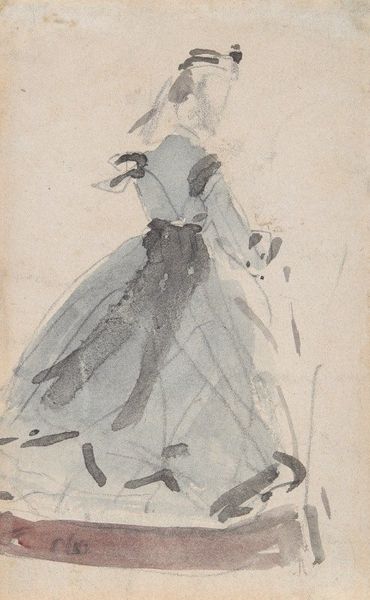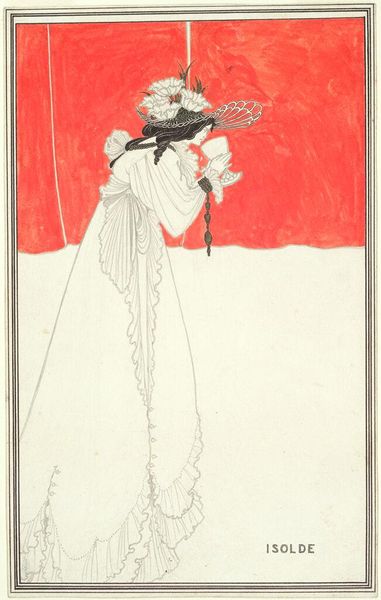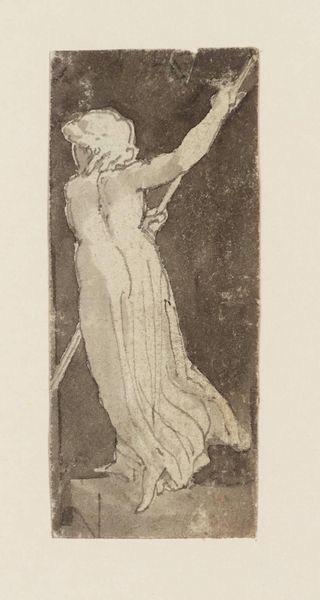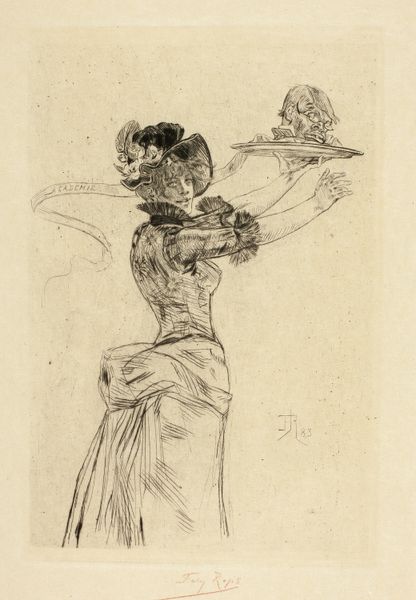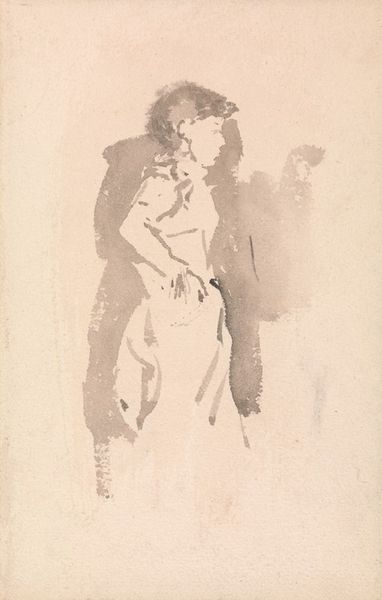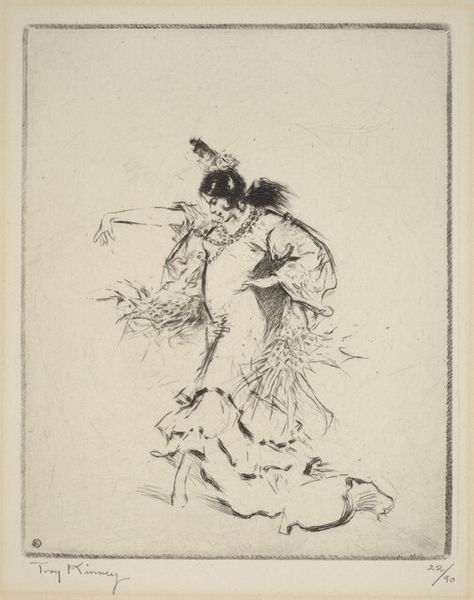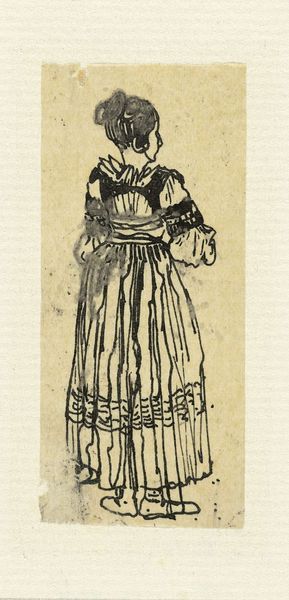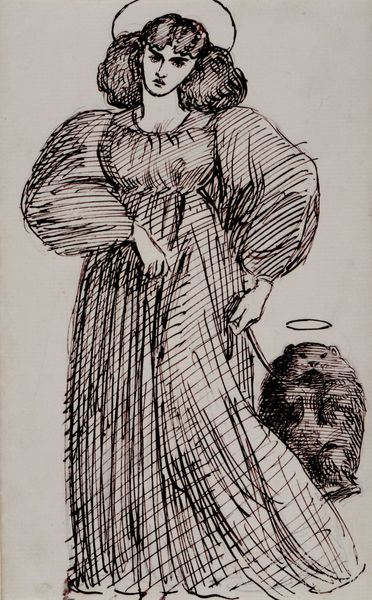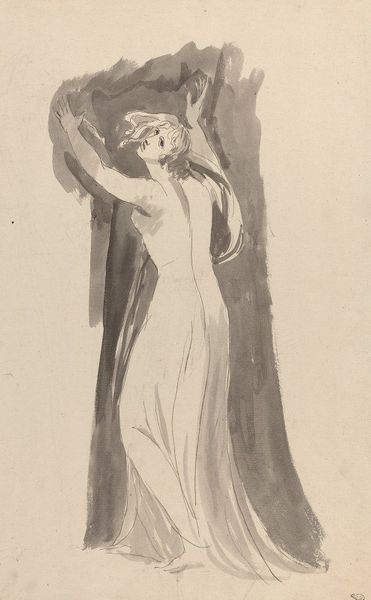
Copyright: Public domain
Curator: Let's turn our attention to "Mademoiselle Marcelle Lender, Standing," a drawing by Henri de Toulouse-Lautrec, created in 1895. Editor: My immediate reaction is that it's so delicate. The colors are muted, almost faded, but the red really pops, like a deliberate, perhaps even aggressive, gesture. Curator: Lender was a popular performer at the Théâtre des Variétés. Toulouse-Lautrec captured her likeness in numerous works. This drawing is part of a larger portfolio where we can observe the burgeoning celebrity culture. Editor: Absolutely, and it’s fascinating to consider the materiality of it—charcoal and pastel. Think about the accessibility of those materials, particularly charcoal, linked to the everyday. It is almost an industrial aesthetic used to depict high society. Curator: It speaks to Toulouse-Lautrec's project of immortalizing the entertainment world of late 19th-century Paris, and that specific time, a milieu of artists, performers, and the bohemian elite. The style blends the formal portraiture with the immediacy of Impressionism and the decorative line of Art Nouveau, right? Editor: Precisely! Note the sketchy lines, giving a sense of motion. Also the red almost looks like its been quickly applied as one final flourish, possibly with chalk. Did he produce lots of these images for public consumption? That is, could it be considered a prototype for contemporary fan art or commercial print work? Curator: The portfolio was indeed printed and available, playing a key role in shaping Lender's public image and the popular perception of the nightlife itself. Editor: Then the material—pastel and charcoal—makes perfect sense, cheap enough to distribute. This is also, notably, a “working” aesthetic that renders fashionable society more, perhaps deliberately, industrial than aristocratic. It reframes labor in leisure. Curator: What began as a portrait is, in its materiality and availability, part of the engine of consumer culture that came to define modern Paris. Editor: Fascinating to see how those two perspectives—representation and consumption—are actually inseparable when considering a piece like this one.
Comments
No comments
Be the first to comment and join the conversation on the ultimate creative platform.

